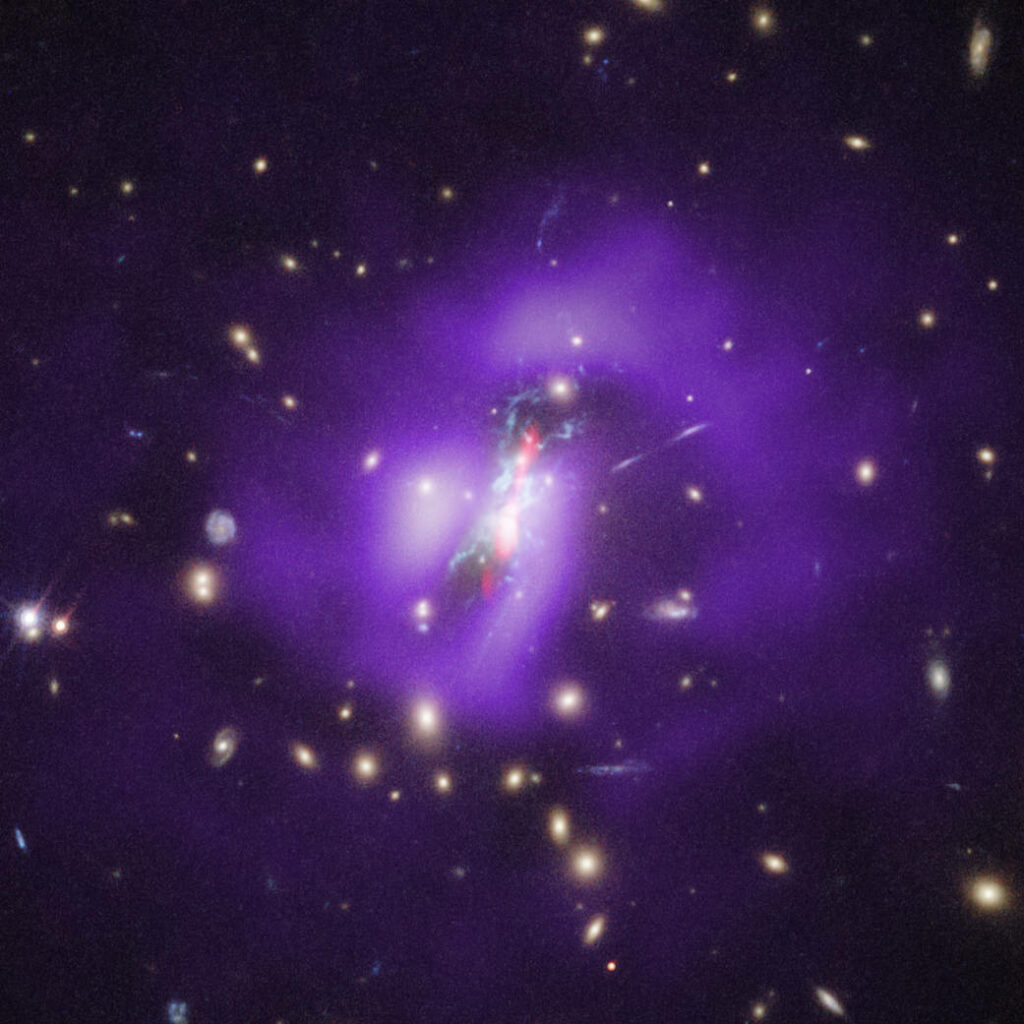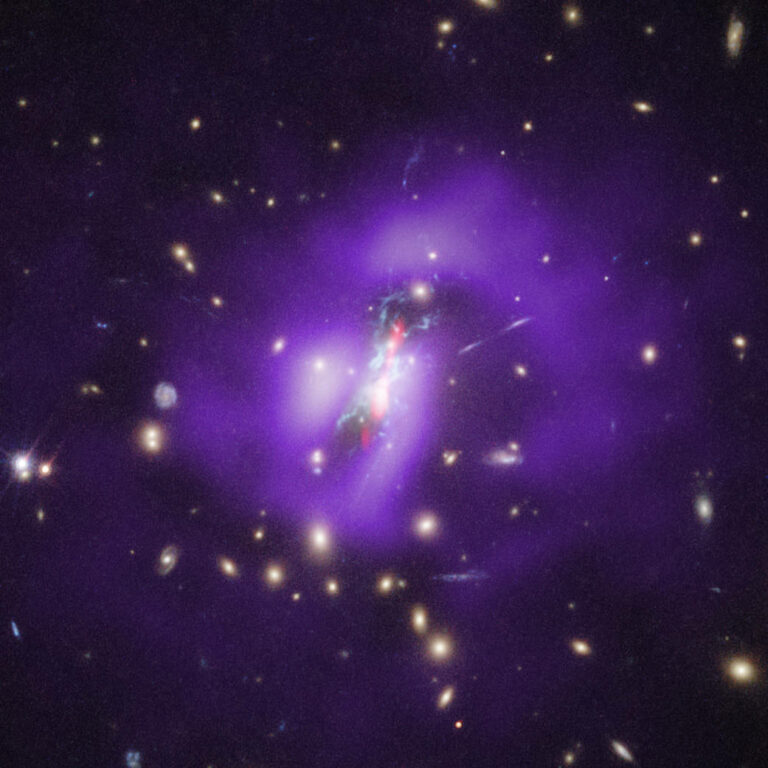NASA has reported that a supermassive black hole is giving birth to stars at a rapid rate of 500 annually.
NASA has uncovered a groundbreaking revelation concerning a supermassive black hole that has been actively generating stars at an incredibly rapid pace. This breakthrough discovery has the potential to shed light on the mysterious origins of gaseous celestial bodies.
By analyzing data collected from NASA’s Chandra X-ray Observatory and the Hubble Space Telescope, a group of scientists from MIT has honed in on a distant galaxy cluster called the Phoenix Cluster. Within this cluster, they have pinpointed a supermassive black hole that is creating ideal conditions for star formation.

Unlike the typical supermassive black holes found at the centers of galaxies, the one residing in the Phoenix Cluster is significantly less powerful. This reduced power allows large gas clouds within the galaxy to cool down, kickstarting the process of star creation.
Michael McDonald, the lead researcher and an astronomer from MIT, stated, ‘The discovery of this phenomenon has been a long-standing pursuit among astronomers.’ He went on to explain, ‘The Phoenix Cluster demonstrates that under certain circumstances, the energy emitted by a black hole can promote cooling, leading to significant outcomes.’
NASA’s search for galaxy clusters with active star-forming regions in their central galaxies – those closest to a central supermassive black hole – has been ongoing for decades without success until now.
In previously studied galaxies, the superheated gas surrounding their cores cooled down as a result of exposure to X-rays. However, this cooling process was disrupted by bursts of energy coming from the central supermassive black hole, impeding star formation.
Co-author Brian McNamara from the University of Waterloo in Canada provided an analogy, comparing the situation to running an air-conditioner in your home during a hot day, only to start a wood fire. Your living space won’t cool down properly until the fire is put out.
He added, ‘Similarly, when the heating process of a black hole is turned off in a galaxy cluster, the gas can cool down.’
The unique conditions observed in the Phoenix Cluster have shown to be highly effective, leading to the transformation of gas into around 500 solar masses annually, a significant difference from the Milky Way’s rate of about one solar mass per year.
Do not forget to share your opinion with us to provide you with the best posts !




0 Comments